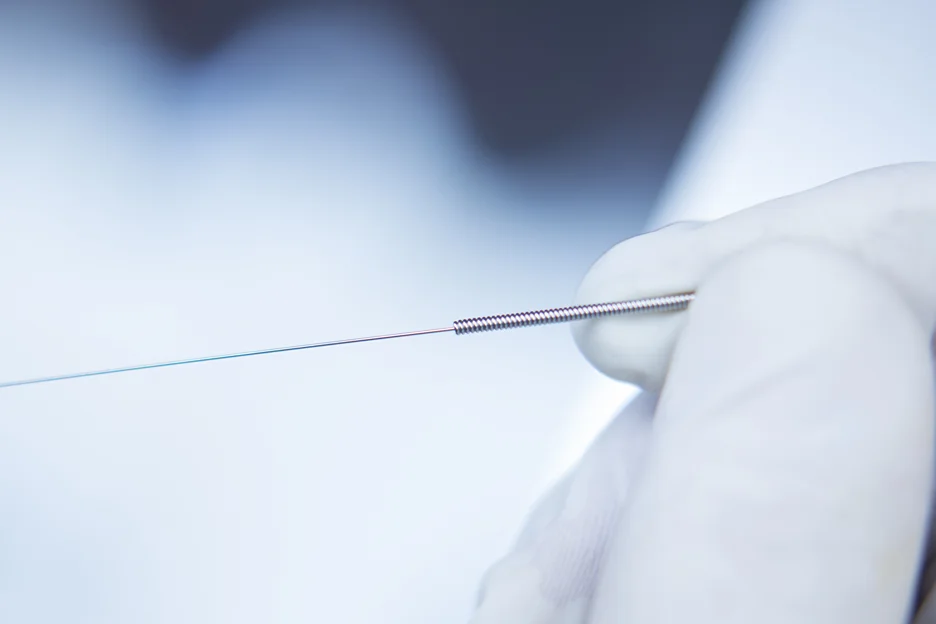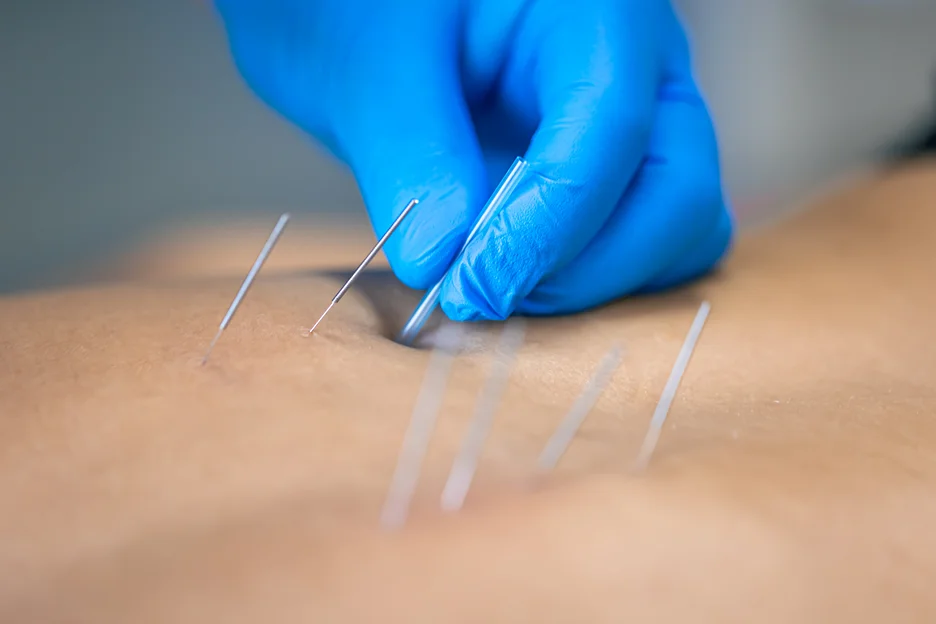If you’re one of the millions who suffer from sciatic nerve pain shooting down your legs, you know just how debilitating this condition can be.
You may have tried medications, physical therapy, and other treatments seeking relief, but the agonizing symptoms persist. We understand the frustration, which is why many people wonder whether dry needling could potentially help ease sciatica.
At Kaly, our mission is to empower chronic back pain sufferers with the latest educational resources and a compassionate support community. In this article, we’ll take a closer look at what dry needling involves, the ways it may calm sciatic nerve irritation, and what scientific studies reveal about its effectiveness so far. While more research is still needed, initial findings suggest dry needling may offer new hope for gaining control over sciatica.
Keep reading as we explore this emerging technique – from how it works to its benefits and limitations.
What is Dry Needling and How Does it Specifically Target Sciatica?

Dry needling involves inserting solid filament needles into trigger points within muscles. Trigger points are tight knots or bands of muscle that can refer pain to other areas of the body. In the case of sciatica, trigger points in the lower back, hips, and legs can irritate the sciatic nerve and cause pain to radiate down the leg.
The needles used in dry needling are very thin, solid, and flexible. They allow our physiatrists to target irritated nerves, release muscle tension, increase blood flow, and reboot the connection between the nerve and muscle. Basically, dry needling gets right to the anatomical source of your sciatic nerve pain.
Dry needling helps reduce sciatica symptoms like:
- Radiating leg and hip pain
- Numbness and tingling down the leg
- Muscle spasms and cramps
- Inflammation around the sciatic nerve
- Difficulty standing, walking, or sitting
By releasing trigger points and tension around the sciatic nerve, dry needling can provide lasting relief for recurring or chronic sciatica.
Can Dry Needling Offer Effective Relief for Sciatica Symptoms?
Yes, studies have shown dry needling to be effective at reducing pain and disability related to sciatica. One clinical trial found that dry needling of trigger points in the lower extremities provided reductions in sciatica symptoms. After several sessions, patients experienced less pain, improved range of motion, and could walk greater distances.
The effects can last for several weeks or months before maintenance treatments become necessary.
How Does Dry Needling for Sciatica Compare with Other Treatments?

Dry needling is often compared with acupuncture since they both utilize thin needles. However, the approaches are very different:
| Dry Needling | Acupuncture |
| Based in Western anatomical principles and neuroscience | Focuses on accessing energy pathways and channels |
| Goal is releasing trigger points causing nerve irritation | Whole-body approach rather than just targetting sciatic nerve |
| Typically provides immediate, localized pain relief | Needles placed in pre-determined meridian points |
| Conducted by physical therapists with medical training | Background in Traditional Chinese Medicine |
| Covered by many insurance plans | Often not covered by insurance |
Both therapies are considered safe and effective. Dry needling offers a precise, efficient option to gain control over acute or chronic sciatica. We find many patients prefer dry needling since the treatment is focused specifically on resolving their nerve pain.
What Are the Potential Risks of Dry Needling for Sciatica?
Dry needling is considered a very safe method when performed by properly trained physical therapists like those at Kaly. Potential side effects are typically mild and temporary, including:
- Site soreness for 1-2 days post-treatment
- Minor bleeding or bruising
- Brief increase in pain due to releasing muscle tension
More serious risks, such as pneumothorax (punctured lung) or infection, are extremely rare with dry needling. Our physical therapists have extensive medical training to correctly insert needles while avoiding blood vessels and vulnerable tissues. Proper needle insertion and hand hygiene techniques make the risks negligible for most patients.
Are There Particular Points Used in Dry Needling to Address Sciatic Nerve Pain?

Yes, there are certain myofascial trigger points that are directly associated with radiating sciatic pain. Our therapists focus on these key areas to release muscle knots irritating your sciatic nerve:
- Piriformis – This deep hip muscle compresses the nerve if inflamed or tense.
- Hamstrings – Knots here refer pain down the back of the thigh.
- Gastrocnemius – Calf trigger points can mimic sciatica symptoms.
- Quadratus lumborum – This lower back muscle links to the nerve.
- Gluteal muscles – The glutes protect the nerve which can get compressed.
Releasing trigger points in these tissues provides focused relief for the compromised sciatic nerve.
Is Dry Needling an Option for Treating a Pinched Nerve in the Back Related to Sciatica?
Yes, when a herniated disc or bone spur is pinching your sciatic nerve, dry needling can help reduce muscle tension and spasms around the impingement. Needling helps loosen the muscles gripping the nerve so it has space to heal without constant irritation.
However, dry needling alone is usually not enough to resolve an anatomically pinched or compressed nerve. Additional therapies like spinal decompression, physical therapy, and chiropractic adjustments help take pressure directly off the nerve.
We recommend coupling dry needling with other treatments to address the structural impingement as well as the related muscle tension a pinched nerve causes. The combination provides comprehensive relief. Our team is fully equipped to provide integrated care for pinched nerves contributing to sciatica.
How Quickly Can One Expect Relief from Sciatica Symptoms After a Dry Needling Session?
One of the benefits of dry needling is that relief can be immediate during or right after treatment. As our therapists stimulate trigger points and release muscle tension around your sciatic nerve, many patients report an instant decrease in radiating leg pain and other symptoms.
The effects continue to improve over the 24-48 hours following your initial session as inflammation subsides and the muscles relax further. Post-treatment soreness may occur during this time as the tissues heal. The sustained pain relief really sets in within a couple days.
Escape the Suffering of Sciatica with Kaly

We hope this overview has helped explain how dry needling can be your sciatica solution. At Kaly, our experts are passionate about using a wide variety of techniques to change patients’ lives for the better. If you have any other questions about dry needling or want to schedule your initial consultation, don’t hesitate to contact us today.
